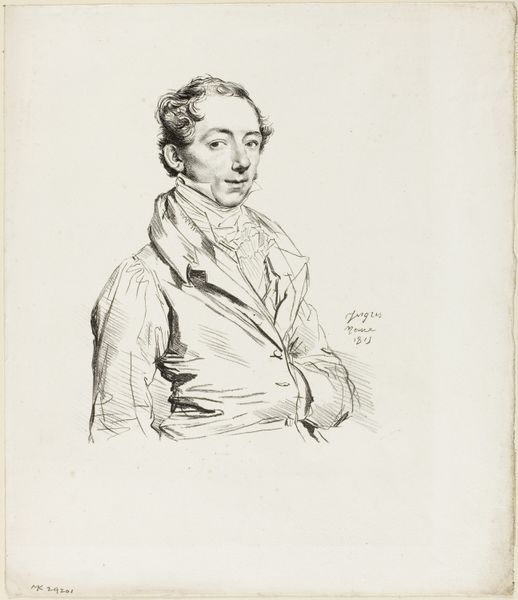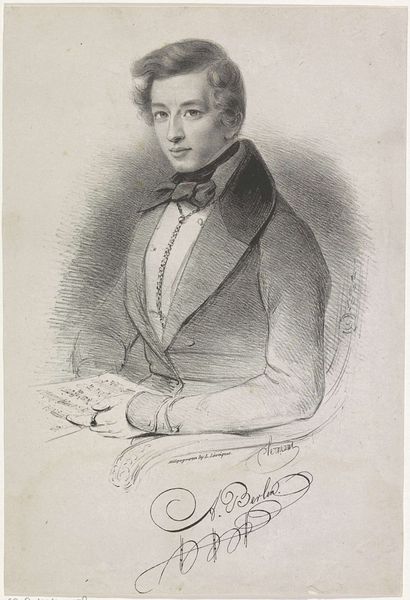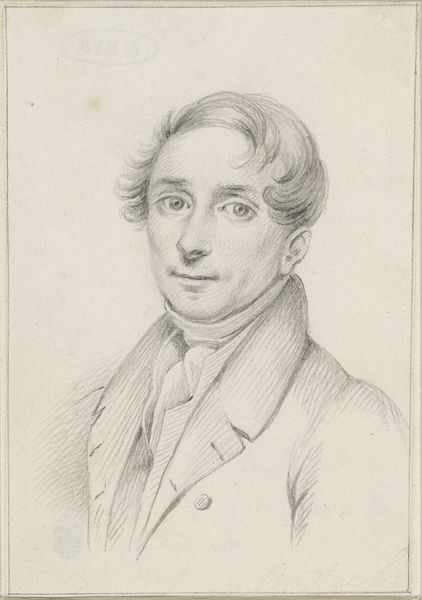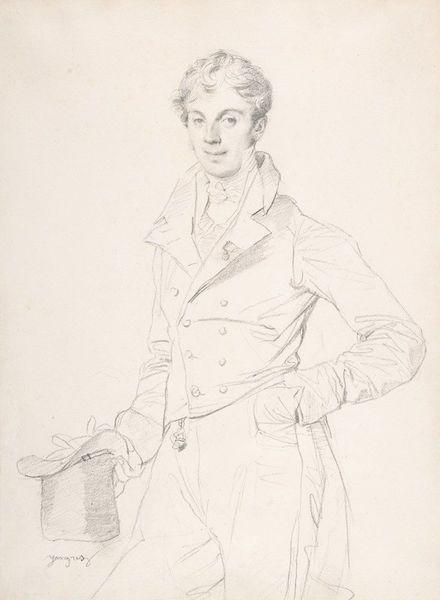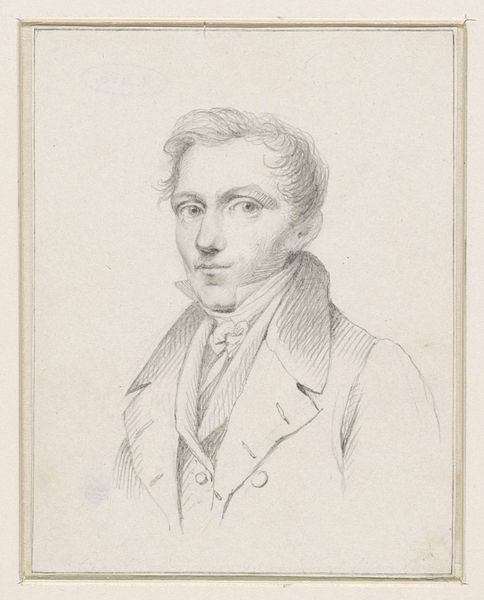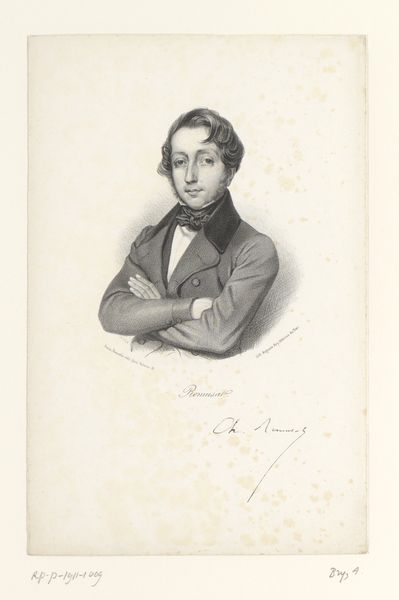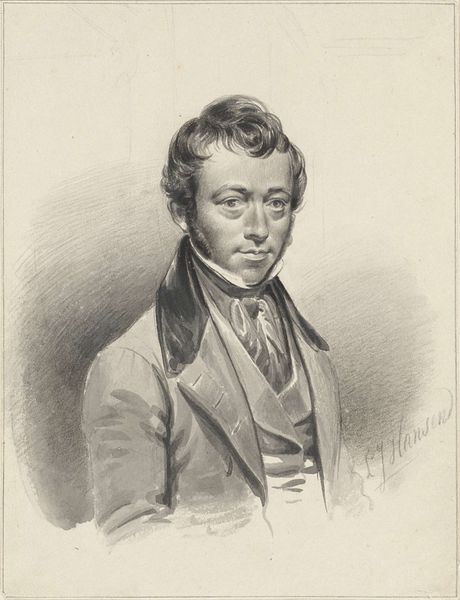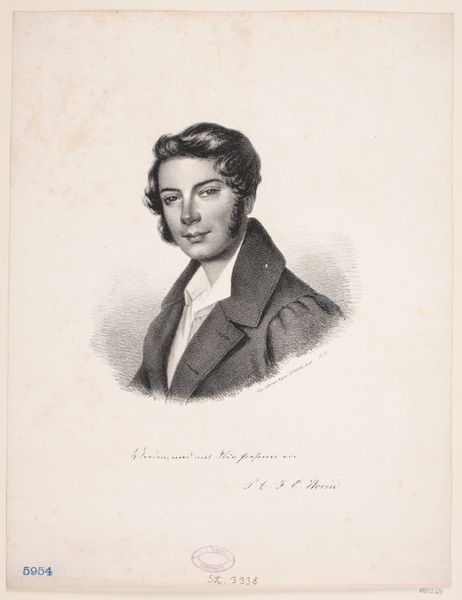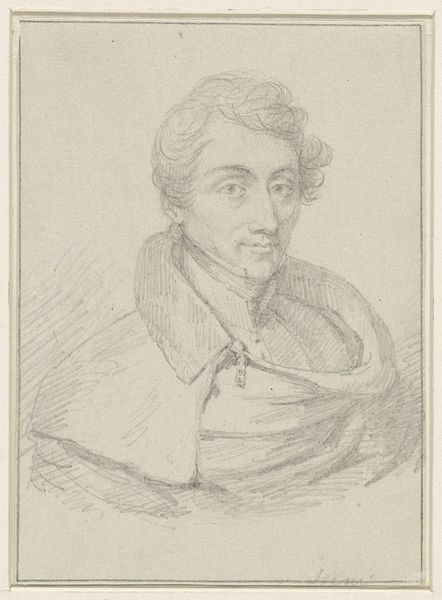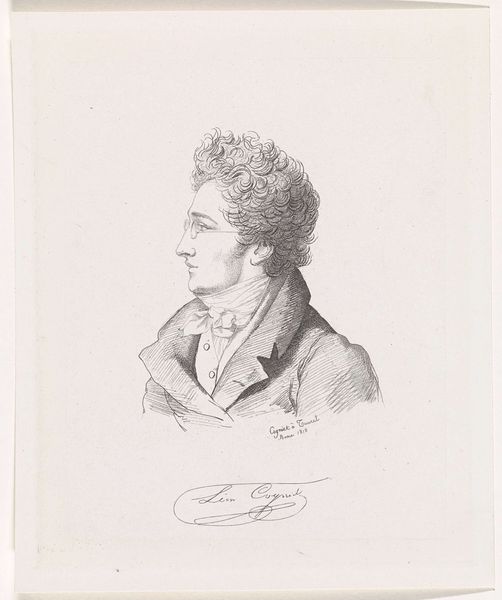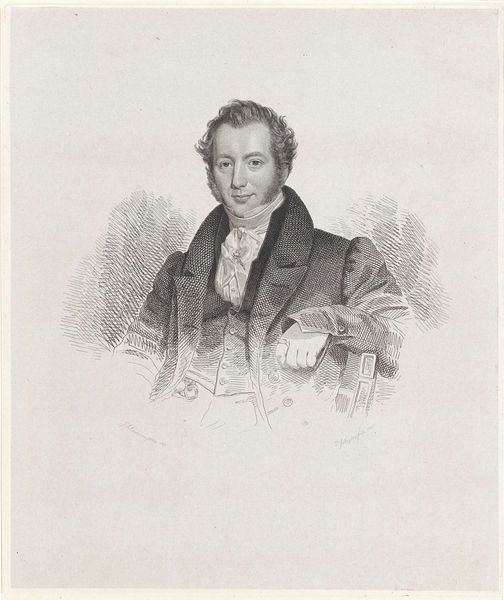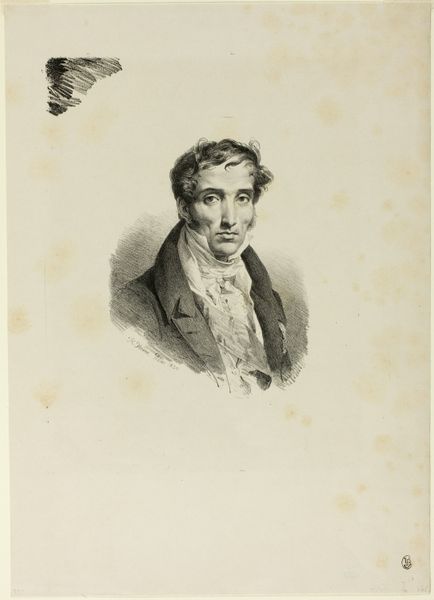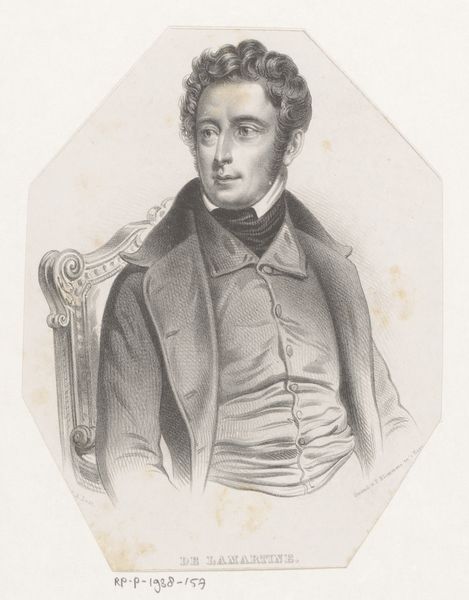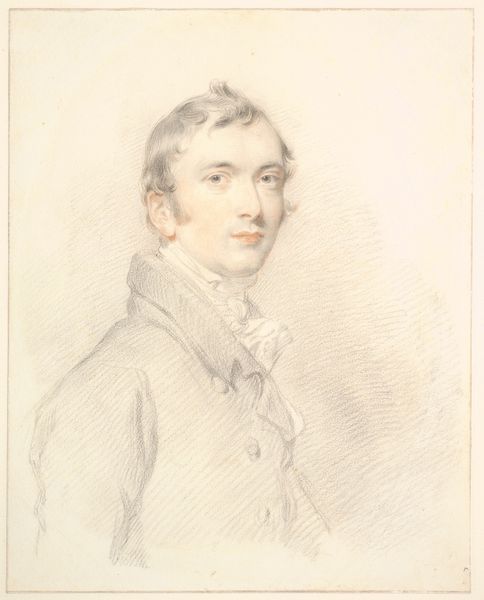
Portrait of Frederick Sylvester Douglas 1815
0:00
0:00
drawing, print, pencil, graphite
#
portrait
#
drawing
#
neoclacissism
# print
#
pencil sketch
#
charcoal drawing
#
pencil drawing
#
pencil
#
graphite
Dimensions: Sheet: 25 3/16 × 16 15/16 in. (64 × 43 cm) Image (D): 9 13/16 × 6 11/16 in. (25 × 17 cm)
Copyright: Public Domain
Jean Auguste Dominique Ingres created this portrait of Frederick Sylvester Douglas in Rome in 1815. It’s a lithograph, a printmaking process that relies on the chemical repulsion of oil and water. The artist draws an image on a flat stone or metal plate with a greasy substance, applies ink, which adheres only to the greasy areas, and then presses the image onto paper. The material qualities of lithography, with its fine lines and delicate gradations of tone, lend themselves well to portraiture. The process allowed for the relatively quick and inexpensive reproduction of images. Lithography democratized image-making, making portraits accessible to a wider audience beyond the wealthy elite. Ingres’ portrait captures Douglas’ likeness with remarkable detail, from his refined features to his elegant attire. But the lithographic process itself speaks to broader social and economic forces. It reflects the rise of industrial capitalism and the growing importance of mass production in the 19th century. By understanding the materials, making, and social context of this artwork, we can appreciate its full significance, challenging traditional distinctions between fine art and craft.
Comments
No comments
Be the first to comment and join the conversation on the ultimate creative platform.
